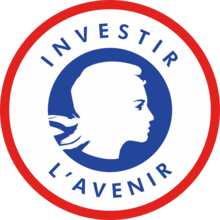Combined (eco)-physiological approach and 3D modelling to understand and analyse the role of the cuticle in the growth and quality of fleshy fruits
Goals
The objectives of the project are to better understand the multiple roles of the cuticle in the control of growth and quality of fleshy fruits. To this end, an interdisciplinary approach combining developments in 3D modelling, ecophysiology and technology is proposed. The study benefits from tomato mutants affected in the composition of the cuticle.
Actions
Action 1: Development of a Fruit3D model integrating water and carbon flows with tissue mechanics.
Action 2: Measurement of fruit growth and quality (final size, sugar and acid composition, texture) for different ’cuticle’ mutants grown under control and water stress conditions (Fig.1). Measurement of post-harvest fruit development.
Action 3: Measurement of fruit conductance and mechanical properties of the fruit cuticle in several ’cuticle’ mutants (Fig.2).
Action 4: Optimisation via the model of cuticle properties with respect to final fruit quality and resistance to water stress.
Results
Fruit growth was little affected in the cutin mutants under both control and water stress conditions (Fig. 3), despite variable conductances (Fig. 4). This result suggests compensatory mechanisms between water losses by transpiration and water inflow related to the regulation of turgor and osmotic pressures. The results of the fruit composition (under analysis) will allow us to better understand these mechanisms and to test the behaviour of the model.
A two-dimensional multicellular model has been developed, which couples water and sugar flows at the fruit scale with the mechanical properties of the cell walls. Numerical simulations show a highly non-linear behaviour of the system. Two distinct growth regimes were identified: a regime that allows strong growth heterogeneities (Fig. 5a) and a regime that produces homogeneous growth (Fig. 5b). From a biological point of view the former is well suited to morphogenesis, the latter to homothetic growth after the tissue differentiation phase.
Prospects
Development of a 3D structure-function model of the fruit combining mechanical constraints and growth processes
- Project Number1202-039
- Call for project
- Start date :1 July 2013
- Closing date :31 August 2015
-
Research units in the network


